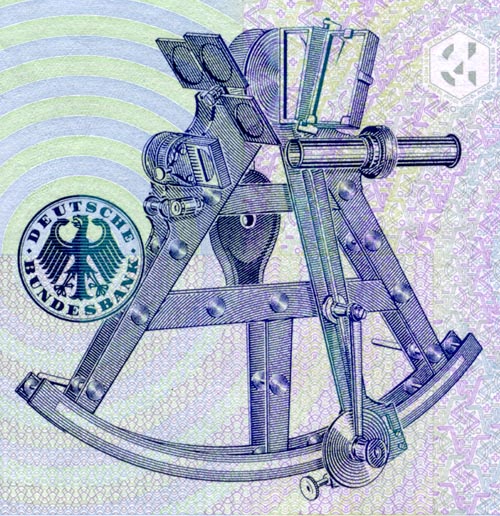
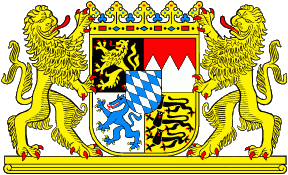

Germany has been through seveal currencies over the years. After World War I, inflation became so bad that wheelbarrows of money bought only a few eggs. For example, here is how the price of a 1 kg (2 lb) loaf of bread changed:
| Date | Price |
|---|---|
| 1919.12 | 0.80DM |
| 1921.12 | 3.90DM |
| 1922.12 | 163.15DM |
| 1923.04 | 474.00DM |
| 1923.07 | 3,465.00DM |
| 1923.08 | 69,000.00DM |
| 1923.09 | 1,512,000.00DM |
| 1923.10 | 1,742,000,000.00DM |
| 1923.12 | 399,000,000,000.00DM |
They revalued their currency and moved forward until they needed to start over again after World War II.
In the spring of 1948, shortly after the negotiations with the Soviets about a common currency reform had failed, General Lucius D. Clay, US military governor in Germany, had an expert group with German participation prepare a currency reform, which entered into force on 20 June 1948.
In June, 1948, the Allied military administration in the Western occupation zones of Germany distributed a new currency which had been printed in the U.S. and brought into Germany in a secret operation of the U.S. Army. The bank notes carried no signatures and made no mention of an issuing authority. But they did carry the name of Deutsche Mark. — http://www.eh.net/bookreviews/library/0227.shtmlThe Deutschmark strengthened to a $1.39 per Deutschmark in early 1995, but when we visited in October of 2001 a Deutschmark was worth $0.46.
There are Deutschmark coins for 1, 2, and 5 marks, and for lesser amounts called pfennigs there are 1, 2, 5, 10, and 50 pfennig coins. Pfennig in German and penny in English both come from the Latin denarius. There is a 'd' on the English copper pennies that is evidence of this connection to this day.
The bills become larger in size for the larger denominations. It felt strange to have different sized bills. We saw and used 10, 20, 50, and 100 DM bills, although 200, 500, and 1000 DM bills also exist.
| Denomination | Front | Front City | Back |
|---|---|---|---|
| 1000 | Wilhelm (1786-1859) and Jacob Grimm (1785-1863) philologists and collectors of the German linguistic and cultural heritage | Kassel | The Deutsches Wörterbuch (German dictionary) and the Royal Library in Berlin, one of the places where the Grimms worked. |
| 500 | Maria Sibylla Merian (1647-1717), painter, copperplate engraver and natural scientist | Nuremberg | A dandelion on which a calliteara fascelina caterpillar and butterfly are sitting. |
| 200 | Paul Ehrlich (1854-1915), doctor and serologist | Frankfurt | A microscope, the instrument frequently used by Paul Ehrlich in his work. |
| 100 | Clara Schumann (1819-1896), pianist and composer | Leipzig | A concert grand piano and the Hoch Conservatory in Frankfurt where Clara Schumann taught for many years. |
| 50 | Balthasar Neumann (1687-1753), baroque architect | Würzburg | Partial view of the staircase of the Residenz in Würzburg and in longitudinal section the Benedictine abbey church of Neresheim. |
| 20 | Annette von Droste-Hülshoff (1797-1848), poetess | Meersburg | A quill pen and a beech tree alluding to Annette von Droste-Hülshoff's novella Die Judenbuche (The Jew's Beech). |
| 10 | Carl Friedrich Gauss (1777-1855), mathematician, astronomer, geodesist and physicist | Göttingen | A sextant as used by Gauss for surveying. |
| 5 | Bettina von Arnim (1785-1859), writer | Berlin | The Brandenburg Gate. |
My favorite bill is the 10 DM bill with Carl Friedrich Gauss, the great mathematician. In the background are buildings of historical Göttingen.
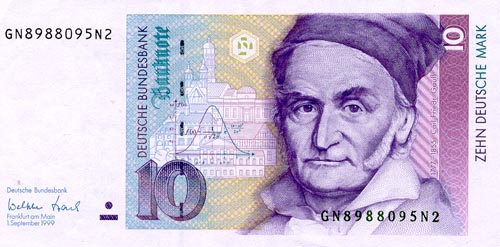
On the reverse is a sextant used in surveying and navigation, along with a surveying grid in the lower right. Actually according to Frank Reed the instrument is a vizeheliotrop. Henry Halboth states that "a heliotrope is a device for reflecting the sun's rays to a distant point to aid in long distance observations", and Wolfgang Köberer states that "the Vize-Heliotrop is a sextant equipped with an additional mirror which reflects the image of the sun to a distant point."
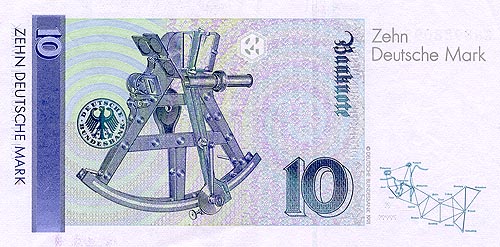
On the front is the normal distribution shown both as a graph and also as a mathematical equation. Gauss discovered and analyzed this "bell-curve" which is used throughout the world in many ways now. I think it is marvelous that Germany remembers these technical achievements and discoveries. Our US bills need some formulas! Here is a closeup of the front where the normal distribution is:
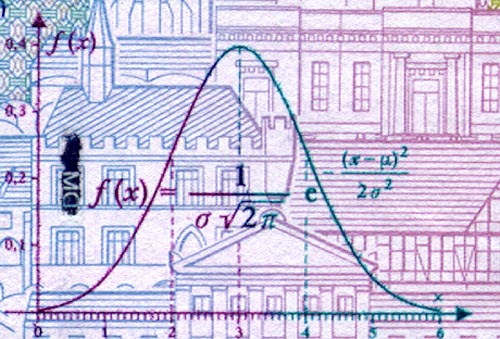
Here is a closeup of the sextant (vizeheliotrop) on the back:

To see more of the bills, visit Deutsche Bundesbank.
Most things we saw in Germany are already marked in both Deutschmarks and Euros.
Today, in the German food trade, 77% of all items are sold at only ten prices between 0.99 and 5.99 Marks. In order to return to these threshold prices ending with a 9, companies will have to adjust their Deutschmark prices accordingly before the changeover. Euro coins include 2 and 1 Euros, then 50, 20, 10, 5, 2 and 1 cents. The seven Euro banknotes (5, 10, 20, 50, 100, 200, 500 Euros) are identical in all member countries, unlike the new coins, whose backs bear different designs. I am anxious to go back next year to see the Euros.
Back to Germany overview.
Back to Dan's home page.
Created: 18 Oct 2001 Modified: 26 May 2017